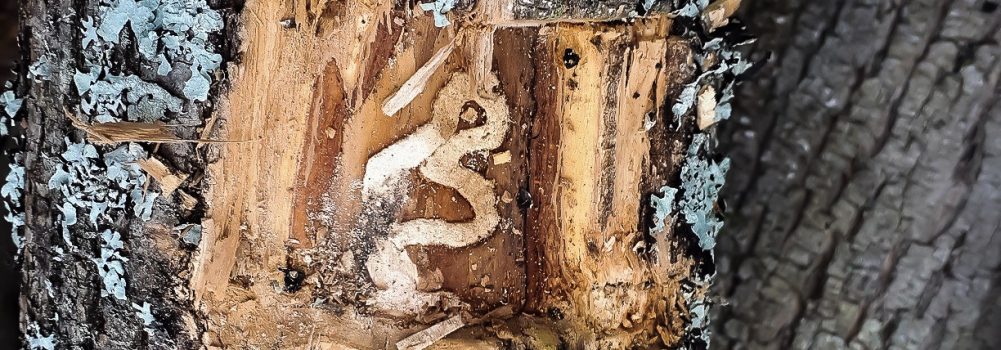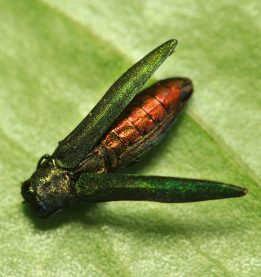Emerald Ash Borer
What is Emerald Ash Borer?
Travelling all the way from Asia, the emerald ash borer was first observed in an Ontario ash tree in 2002. Over a very short time, this small forest pest had managed to cause great economic and environmental destruction. Government prohibitions on firewood movement (which can spread the borer) have been unsuccessful and a large-scale infestation in Ontario is underway.
Infestations of emerald ash borer can occur in both stressed and healthy ash trees. The small pest lays its eggs in the trunk, the eggs hatch into larvae, and the larvae continue to make a tunnel through its vascular system until it grows into an adult and exits the tree. The vascular system is necessary for the tree to distribute water and nutrients to all of its parts. Once this system is disturbed by emerald ash borer larvae, the affected ash tree will die.
The emerald ash borer is quite small and may be difficult to see since it is usually 8.5 to 14 mm long. Larvae are a creamy white colour with a brown coloured head and adults are a metallic green. Noticing infested ash trees may be easier; affected trees begin thinning in the crown with branches dying and leaves turning yellow. Affected ash trees will also have small D-shaped holes in the bark where adults have exited the trees.


Where is the Emerald Ash Borer found in our watershed?
As of 2016, the County of Simcoe has confirmed sightings of emerald ash borer within New Tecumseth, Bradford West Gwillimbury, Essa, Adjala-Tosorontio, Oro-Medonte, the City of Barrie, Collingwood, and Wasaga Beach. Spreading of the borer is of high concern in our watershed because of the ash-dominated wetlands in Collingwood and Wasaga Beach and the ash stands in the internationally significant Minesing Wetlands.
How to control the spread
Prevention of spread is the key to emerald ash borer. Remember to buy firewood locally and avoid transporting wood over a long distance. As well, there is a biopesticide available that can be injected into non-infested ash trees every two years in order to preserve the healthiness of the tree (this can be expensive).
Early detection is key
- Report ALL sightings of infested Ash trees to EDDmapS.
- Do not move firewood or dead wood to different locations, instead buy and burn locally!
- Plant native replacement trees rather than ash trees on your property.
Invasive species on private property
NVCA does not offer a service to remove invasive species on private property. If you are looking for tips on dealing with invasive species on your property, see the links above, or visit Ontario’s Invading Species Awareness Program
Image courtesy of Helen Sereda, Silv-Econ Ltd.